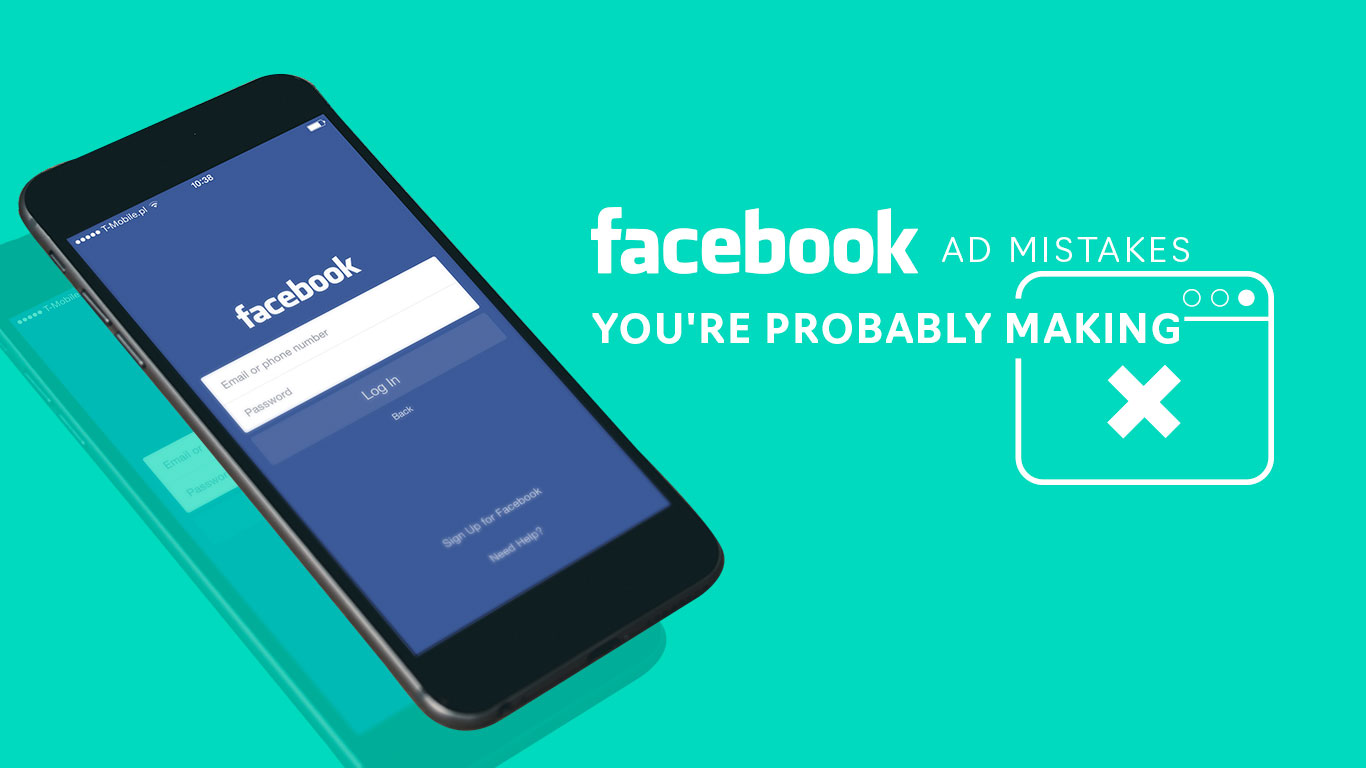// WIDSIX WRITTEN WORD //
Facebook Ad Mistakes You’re Probably Making
68% of the U.S. adult population is on Facebook, and of that 68%, 74% of users visit the platform every day, according to Pew Research Center. So if you’re making mistakes with your Facebook ads, you’re missing out on tons of valuable potential. The scary part is, some of these mistakes are so commonplace, that you’re probably already making them. However, because of this, you can be assured that if you address these Facebook ad mistakes, you’ll get a major leg up on your competitors. And of course, as always, we’re gonna tell you exactly how! So stay tuned…
Mistake #1: Targeting the wrong people.
This all comes down to knowing your audience. And I mean really knowing your audience, as well as how they will likely respond to your ad and entire campaign based on their demographics and previous behavior patterns. If you target the wrong audience, they won’t be interested in what you’re offering, and therefore your ad won’t perform to its fullest potential.
How to fix it: Hopefully you’ve already gathered a good amount of data on your audience. If you have little to no idea about who makes up your target audience, then Facebook ads are the least of your worries. Use audience segmentation to break down the different subsets of your followers/clients/customers, and craft ads for each specific group.
Mistake #2: Failing to grab the audience’s attention
We get it, you’re already spending thousands to run your ads on Facebook, so you may feel inclined to cut corners on the graphic design elements. However, if your ad isn’t grabbing people’s attention, you’re flushing your budget straight down the drain. Most people have become accustomed to tuning out ads as they scroll through social media, so you need to ensure that you’re standing out from the crowd, and providing them an offer they simply can’t refuse.
How to fix it: Research has found that people will make up their minds within 90 seconds of their initial interactions with products or people, and about About 62–90 percent of the assessment is based on colors alone. Therefore, using eye-catching colors that pop out of the screen is a great way to direct a viewer’s attention to your ad. The layout should be simple, clean, and sleek — don’t overcrowd it with multiple images and chunks of text. Keep the caption short as well, no more than a sentence or two.
Mistake #3: Including too much text over an image.
According to Facebook, images with less than 20% text perform better. For example, Facebook ads that contain images with little to no image text tend to cost less and reach more people than ads with image text.
How to fix it: Luckily, Facebook actually provides their own tool that will tell you if your image contains too much text. It’s not 100% accurate, but it’s a great baseline.
Mistake #4: Offer of value isn’t there or is unclear.
What’s an ad without a call to action? In order to entice people to click on your ad, you MUST be offering some sort of value, whether it be a discount code, free shipping, a contest, etc.
How to fix it: Create benefits-oriented copy. Show your audience all that could be theirs if they clicked your ad. You could also sweeten the deal by offering a limited-time offer, which will compel people to act fast as to not let the offer expire. Don’t make the mistake of offering something of irrelevant or low value, as this may turn people away (or worse — view your brand as cheap)!
Mistake #5: Not managing campaigns properly.
Running an ad for too long without management can lead to Facebook ad fatigue. In other words, your ad will decrease in effectiveness and interest overtime if you just leave it be for months.
How to fix it: In order to avoid ad fatigue, you must always be on top of analyzing your campaign’s success. Look at things like return on ad spending vs the cost, relevance, frequency, and CPM metrics. Then, make adjustments to ad creative and copy based on those findings, as well as objective and targeting.
In Conclusion…
You should be continuously striving for improvement on your ads, so don’t worry if you’ve made some of these mistakes or others not listed here. The important thing is that you continue to A/B Test, analyze results, and adapt based on the information you’ve gathered.





